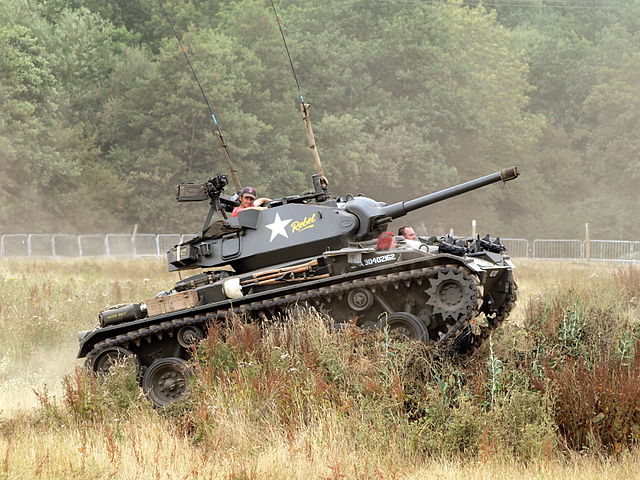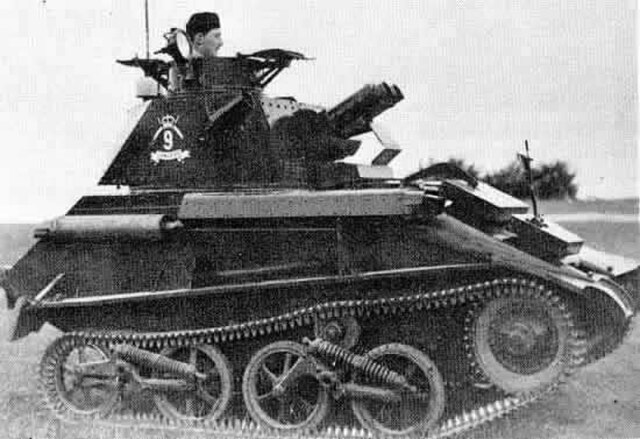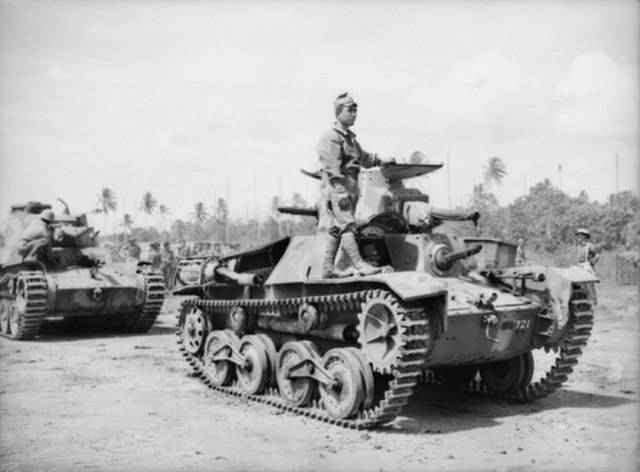The Panzer I was a light tank produced by Nazi Germany in the 1930s. Its name is short for Panzerkampfwagen I, abbreviated as PzKpfw I. The tank's official German ordnance inventory designation was Sd.Kfz. 101.
A Wehrmacht Panzerkampfwagen I Ausf. A light tank on display at the Deutsches Panzermuseum Munster in Munster, Germany.
A Spanish Panzer I Ausf. A on display at the El Goloso Museum of Armored Vehicles in Spain. This particular vehicle has its original drive-sprockets and tracks replaced by those of the US M113 armored personnel carrier (APC).
A former German Pz.Kpfw. I Ausf. F on display at the Belgrade Military Museum in Belgrade, Serbia
A German Panzer I Ausf A on the bank of the Brda River in Poland during the German invasion of the country, 4 September in 1939
A light tank is a tank variant initially designed for rapid movements in and out of combat, to outmaneuver heavier tanks. It is smaller in size with thinner armor and a less powerful main gun, tailored for better tactical mobility and ease of transport and logistics. They are primarily employed in the screening, armored reconnaissance, skirmishing, artillery observation, and supplementing landing operations in a fire support role of expeditionary forces where larger, heavier tanks are unavailable or have difficulties operating safely or efficiently.
The M24 Chaffee, an American light tank used during the later part of World War II, and several subsequent conflicts
US Army operating Renault FT tanks
British light tank Mk V
Type 95 Ha-Go tanks in New Britain following the Japanese surrender








